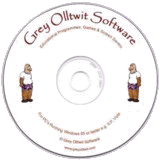
About Us
ADD/ADHD News
ADD/ADHD Books
ADDerwards
Creative ADDers
Donate
Events
GO Games
Information
Links
Natural Remedies
Research
Resources
Support Groups
Whats New
ADHD SOFTWARE
FREE DVD or CD

ADD/ADHD Online Information
ADD/ADHD Information
AS or Asperger Syndrome / HFA or High Functioning Autism
What is the difference between AS and HFA?
Both share:
Abnormalities in social development
Abnormalities in communicative development
The presence of unusual and strong, narrow repetitive behaviours (sometimes called obsessions)
Average or above average intelligence (IQ)
But in HFA there is language delay; in AS there is not.Suggested Diagnostic Criteria For Asperger's Disorder In Children
The two most common documents used for the diagnosis of Autistic Disorders are the DSM IV and ICD 10. The DSM IV is used mostly in the United States though it has been used elsewhere, including the U.K., whereas the ICD 10 is more commonly used in Europe. We have included the descriptions of both, as below.
DSM IV
ICD 10 (European Description)
Note: Consider a criterion met only if the behaviour is considerably more frequent than that of most people of the same mental age.
DSM IV (Diagnostic & Statistical Manual) Asperger's Disorder Diagnostic Criteria:
A. Qualitative impairment in social interaction, as manifested by at least two of the following:
A. marked impairment in the use of multiple nonverbal behaviors such as eye-to-eye gaze, facial expression, body postures, and gestures to regulate social interaction
B. failure to develop peer relationships appropriate to developmental level
C. a lack of spontaneous seeking to share enjoyment, interests, or achievements with other people (e.g., by a lack of showing, bringing, or pointing out objects of interest to other people)
D. lack of social or emotional reciprocity
B. Restricted repetitive and stereotyped patterns of behavior, interests, and activities, as manifested by at least one of the following:
A. encompassing preoccupation with one or more stereotyped and restricted patterns of interest that is abnormal either in intensity or focus B. apparently inflexible adherence to specific, nonfunctional routines or rituals C. stereotyped and repetitive motor mannerisms (e.g., hand or finger flapping or twisting, or complex whole-body movements) D. persistent preoccupation with parts of objects
C. The disturbance causes clinically significant impairment in social, occupational, or other important areas of functioning.
D. There is no clinically significant general delay in language (e.g., single words used by age 2 years, communicative phrases used by age 3 years).
E. There is no clinically significant delay in cognitive development or in the development of age-appropriate self-help skills, adaptive behavior (other than in social interaction), and curiosity about the environment in childhood.
F. Criteria are not met for another specific Pervasive Developmental Disorder or Schizophrenia.
Differential Diagnosis Pervasive Developmental Disorder; Schizophrenia; Autistic Disorder; Rett's Disorder Childhood Disintegrative Disorder; Obsessive-Compulsive Disorder; Schizoid Personality Disorder.
Asperger's Disorder - European Description:
The ICD-10 Classification of Mental and Behavioural Disorders World Health Organization, Geneva, 1992
F84.5 Asperger's Syndrome
A disorder of uncertain nosological validity, characterized by the same kind of qualitative abnormalities of reciprocal social interaction that typify autism, together with a restricted, stereotyped, repetitive repertoire of interests and activities. The disorder differs from autism primarily in that there is no general delay or retardation in language or in cognitive development. Most individuals are of normal general intelligence but it is common for them to be markedly clumsy; the condition occurs predominately in boys (in a ratio of about eight boys to one girl). It seems highly likely that at least some cases represent mild varieties of autism, but it is uncertain whether or not that is so for all. There is a strong tendency for the abnormalities to persist into adolescence and adult life and it seems that they represent individual characteristics that are not greatly affected by environmental influences. Psychotic episodes occasionally occur in early adult life.
Diagnostic Guidelines
Diagnosis is based on the combination of a lack of any clinically significant general delay in language or cognitive development plus, as with autism, the presence of qualitative deficiencies in reciprocal social interaction and restricted, repetitive, stereotyped patterns of behaviour, interests, and activities. There may or may not be problems in communication similar to those associated with autism, but significant language retardation would rule out the diagnosis.
Includes:
* autistic psychopathy
* schizoid disorder of childhood
Excludes:
* anakastic personality disorder * attachment disorders of childhood
* obsessive-compulsive disorder
* schizotypical disorder
* simple schizophrenia
ICD-10 copyright © 1992 by World Health Organization. Internet Mental Health (www.mentalhealth.com) copyright © 1995-1997 by Phillip W. Long, M.D.
Back to Information
Home About Us ADD/ADHD News ADDerwards Advertising Books Contact Us Creative ADDers Donate
Events Forums Information Links Natural Remedies ADDers.org News Research Resources Search adders.org
Site Map Social Stories Sponsor Events Student/Researchers Support Groups Supporters
Join us on....

ADHD SOFTWARE
FREE DVD or CD
